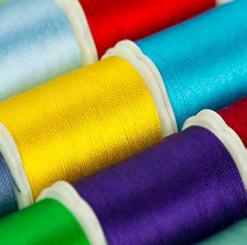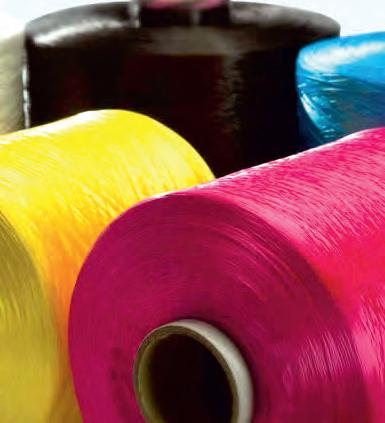
9 minute read
Journey of a successful educationist
(CBU), Zambia • Eastern Michigan University,
USA • Busitema University, Uganda • Kenyatta University, Kenya • School of Textile Technology,
Advertisement
Indonesia • Chenkuo Technology University, Taiwan • HOF University, Germany • Technical University of Liberec,
Czech Republic. • Wuhan Textile University, China • University of Bargamo, Italy • Texas Tech University, USA • Chonnam National University, south Korea • Yeungnam University, Republic
Korea • Tennessee Tech University, USA • Northern University Bangladesh (NUB), Dhaka, Bangladesh • BGMEA University of Fashion and Technology (BUFT), Bangladesh • HAFACEN, Vietnam • Aachen University, Germany • Saxion University, Netherlands Being an educationist, your journey from Industry life and interaction On my industrial experience, I have worked as Tech. Manager in Texto Craft, Madras and as a R & D Officer in Rajabahadur Spinning & Weaving Mills Ltd., Pune. The interaction with the industry is phenomenal, through multiple ways. I have undergone training in different industries. Apart from providing educational facilities of the highest standard, I myself and our team; we are intensively engaged in research and development and providing services to the industry. We have been helping the industry in the areas of material testing, training at various levels, product and process development and providing turnkey consultancy for setting up projects in the areas of spinning, weaving, knitting, chemical processing and garment making. A good number of projects setup by us are already operational and are considered as ideal projects in these areas. Due to our high standard in academics, as well as research and due to our close interaction with the industry, many leading machinery manufactures from all over the world have come forward to donate their latest machines to our institute. Rieter, Trutzschler, ATE, Murata, Then, Fongs, Dornier, Smit, Staubli, Toyoda, Zinser, Savio, Promatech, Schlafhorst, ACIMIT, Pinter, SSM,KTTM, Harish-Wivita, Mayer &Cie, are amongst the prominent donors of machines to us. These machines are useful not only for training our students, but also carry out various trials on these machines for the industry. As a Mentor, what are the qualities, capabilities you choose in your Ph.Dscholars? From my point of view, the PhD aspirant must be self-directed, motivated, and highly disciplined. The candidate should have good communication, good analytical as well as managerial skills. With the start of doctoral studies, the student must be in a position to define the research problem, with critical literature review. With a good knowledge of statistical tools, the candidate should be in position to plan the work with suitable statistical model. He/she should be able to identify the strategy for experimentation and data collection. Further, the PhD scholar should have the necessary skills to analyse the data, followed by drawing conclusions. With critical thinking and writing skills the students should be capable of writing the reports and research articles. He/She should have the inclination to put efforts to solve the problems in industry and society by choosing appropriate topics. How has the textile industry evolved in the last few years? The textile industry covers a wide range of diversified products, right from conventional handloom to the organised industry such as spinning, weaving, knitting, processing and garmenting, with a supply chain system. The Indian textiles industry is set for strong growth, buoyed by strong domestic consumption as well as an export demand. Being mass production system, large scale textile industries are capital and labour intensive. The textiles and apparel industry in India is the second-largest employer in the country providing direct employment to 45 million people and 60 million people in allied industries. The Indian government has initiated a number of export promotion policies for the textile sector. The domestic textiles and apparel industry contribute 2% to India’s GDP, 7% of industry output in value terms and 12% of the country’s export earnings. The domestic textiles and apparel industry stood at $140 bn in 2018 (including handicrafts) of which $100 bn was domestically consumed while the remaining portion worth $40 bn was exported to the world market. Further, the domestic consumption of $100 bn was divided into apparel at $74 bn, technical textiles at $19 bn and home furnishings at $7 bn. While exports comprised of textile exports at $20.5 bn apparel exports at $16.1 bn and handlooms at $3.8 bn. India has also become the second-largest manufacturer of PPE in the world. More than 600 companies in India are certified to produce PPEs today, whose global market worth is expected to be over $92.5 bn by 2025, up from $52.7 bn in 2019. (https://www.investindia. gov.in/sector/textiles-apparel) What are the latest trends in the industry? The COVID-19 pandemic has shaken up the entire textile industry. The demand for textile products has been decreased both foreign and domestic markets. The textile community is scared because of cash crunch, increase in raw material cost, shortage in raw material supply, supply chain disturbance and manpower-related issues. It is
INTERVIEW expected that the industry may take a much longer time to recover after the lockdown. The major textile operations starting from cotton ginning to garment manufacturing and final market are distributed into different regions based on their locational advantageous and are connected with transportations facilities. Since the transportation systems as well as manufacturing activities are still not normalized between the different locations due to localized COVID hot spots area, movement of material is not happening smoothly and affecting entire value chain. The units having entire value chain in one place have grabbed advantage in this case and have started their operations quickly and could give final product directly to the market. In the current situation, spinning units should see forward integration keeping demand of native/domestic market. Spinning industry is becoming non-viable day by day due to various practical reasons. Future expansion therefore, should be on value addition to final textile garments rather than spinning capacity expansion. Views on Sustainability, Carbon footprint, Waste management With noteworthy per capita consumption of clothing, the textile industry has huge size and scope and it is one of the largest industries in the world. Nevertheless, textile industry is one of the biggest sources of greenhouse gases on Earth and depicts significant carbon footprint, due to the type of materials used and the various processes. Carbon footprint reduction has now, become a mandate in order to protect our planet. From the point of view of sustainability, textile industry has huge scope in making a remarkable difference in terms of environmental, economic and social. Looking into this matter, corrective measures have to be initiated by the researchers and technologists to reduce carbon foot prints and load on environment. Use of natural resources is the first solution for this problem. Energy intensive processes are required to be modified. Wherever possible, new technologies and machineries should be adopted to reduce consumption of energy, water and chemicals. Additionally, one can implement environmental management system, including corrective and preventive action plans for effective monitoring and controlling of waste and pollution levels. Recycling and reuse of the material is another effective step towards suitability. Brands can link the business to environmental and social improvements by innovative changes in raw material and production processes, by recycling the material. Producers can apply for the environmental labels such as EU Ecolabel, Blue Angel, Nordic Swan, GOTS. On similar lines, various initiatives are taken by industries such as Nike, H&M and many more. Reduction in shoe box size, effluent discharge monitoring, recycling cloth hangers, recycling and reuse of yarn are few of the business modification done by Nike. In collaboration with NASA, Nike has designed various steps for clean production. About technical textile industry, the products such as mulch mats in agro textiles, pads in medical textiles, interiors in automotive textiles etc. are now being designed making use of biodegradable raw materials. PLA, the biodegradable plastics, derived from corn, is fit for various application in medical textiles. To reduce the waste generation because of plastic carry bags, one of the remarkable advancements in textile industry is manufacturing of nonwoven bags made of natural fibres. How have you personally adopted sustainability in your life? The major change over towards education in today’s COVID pandemic situation is online platforms for educating the students. This can be considered as a sustainable change in education system. What I feel is, that students can learn safely, staying at home in critical situations like today. Even after the students re-join the institute regularly, teachers can adopt a concept of blended mode of teaching by making use of both classroom and online teaching-learning process. How has COVID-19 treated you and changes you feel after COVID-19? The COVID-19 outbreak has significantly affected the educational system all over the world, thus resulting in the partial and total closure of Schools, Colleges, and Universities to control the spread of the disease. As a response to this, our Institute has chosen a variety of ways to continue education in these times of uncertainty. Technical learning: Since the educational institutions had to lock down due to the crisis, the learning process was affected and discontinued initially. However, DKTE came up with innovative ideas to conduct the classes. Considering the situation, digital learning was the only option to continue education. Faculty members of DKTE made use of communication platforms and applications such as Google Meet, Google Classroom, Microsoft Teams, Zoom, etc. to conduct lectures. They even shared videos through websites, portals, social media (like YouTube and Facebook) so that students can access them as and when required. These methods have also helped students to get acquainted with the use of new learning technology. Tests and examinations: Due to the sudden and unexpected emergence of the outbreak, DKTE had to postpone the mid-semester tests and term-end examinations. Before the pandemic, the written examination was the widely accepted method of assessing students. But now, as the world is moving towards digital education, our Institute has also conducted online quizzes and tests using various software like Moodle, Quizes, Google quiz, etc. Multiple Choice Questions (MCQs) replaced descriptive questions. Oral examinations or viva were conducted through telephonic and video calls.
INTERVIEW 58 Online courses: sera to provide free courses to their sions. Many students attended the NOVEMBER 2020 Since the Educational Institutes have been locked for students, they have ample time in their daily schedule. AICTE/UGC/MHRD has designed various online courses in the form of Swayam, NPTEL, MOOCS that allow the students to learn continuously as per their area of interest and at their own pace. DKTE has also collaborated with online course providers like Courstudents and keep them engaged in learning. These courses consist of assignments, activities, and quizzes which help the learners to track their performance and improve learning. Webinars: DKTE also encouraged faculty members and students to attend online webinars and interactive seswebinars which are hosted by the Professors, Industrialists, and experienced people who shared their ideas, work through presentations, videos, etc. The main advantage of attending the webinars is that students can raise queries and questions at any point of interaction, and they can also share and discuss their views using polls and chat box.
















